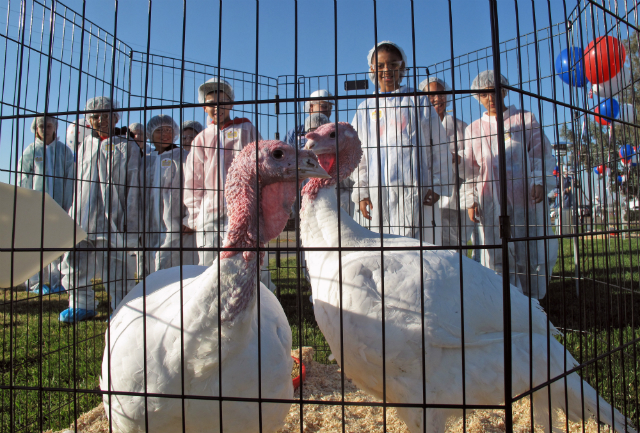
Some turkeys being considered for a Presidential pardon, November 9th 2015. Credit: AP Photo/Scott Smith
Thanksgiving involves getting stressed about the best way to cook a turkey, gathering around a table with the people you love, eating mountains of stuffing… and trying not to tell your family what you really think of them.
So, in celebration of Turkey Day, we’ve got stories that explore how and why we think the way we do: from what the Rorschach test actually tells us, to what exactly is going on inside teenagers’ brains.
First up, if you want to find out what people are really thinking, the best approach may be to take a look at their Google search history. According to Seth Stephens-Davidowitz, looking at publically-available internet data allows you to discover surprising and counterintuitive stuff. Like the role race played in the 2008 election, or how friends impact your love life, or why we’re not having as much sex as we say we are.
Then, even if you’ve never taken one, you’ve probably seen a Rorschach test. The ink blots are just a part of our culture. But how has the iconic psychological tool changed society? And is this way of peering into someone’s mind still relevant? Damion Searls walks us through the origins and rise of the inkblots, and tells us why the Rorschach test isn't really a Rorschach test.
Finally, teenagers are hormonal, moody, and absolutely mystifying. Luckily, Frances Jensen, author of “The Teenage Brain: A Neuroscientist's Survival Guide to Raising Adolescents and Young Adults,” is here to explain them. And it turns out, the teenage brain is a lot more complex than you might think, which has implications for everything from marijuana use to IQ to school start times.

